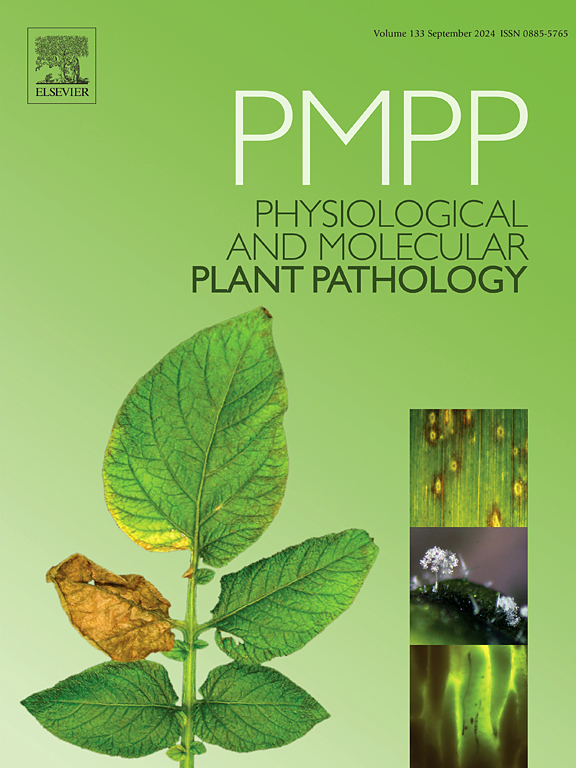Bacillus species suppress Pratylenchus in roots and shape the bacterial community in the rhizosphere of lima bean
IF 3.3
3区 农林科学
Q2 PLANT SCIENCES
引用次数: 0
Abstract
Bacillus species are known to effectively control root-lesion nematodes such as Pratylenchus spp. However, the efficacy of control may vary between Bacillus species. In addition to their direct effects on nematodes, Bacillus species can modulate rhizosphere microbial communities, potentially enhancing biocontrol outcomes. In this study, we investigated the effects of B. subtilis and B. amyloliquefaciens, applied individually and in combination, on the suppression of Pratylenchus spp. and shifts in rhizosphere bacterial communities associated with lima bean (Phaseolus lunatus) landraces and advanced lines. We quantified Pratylenchus populations in soil and root samples following inoculation and assessed changes in rhizosphere bacterial communities using 16S rRNA gene profiling. Both Bacillus strains significantly reduced Pratylenchus populations in roots, with B. subtilis showing greater efficacy, particularly in the landrace genotype. The rhizosphere bacteriome was primarily composed of Actinobacteria, Proteobacteria, and Firmicutes, and inoculation with Bacillus strains altered the abundance of specific bacterial genera. Moreover, predicted microbial functions related to nitrogen cycling and organic matter degradation were affected, with genotype-specific responses observed. Our findings demonstrate that B. subtilis and B. amyloliquefaciens are effective biocontrol agents against Pratylenchus spp. and differentially modulate rhizosphere microbial communities in lima bean, depending on plant genotype.
芽孢杆菌抑制了青豆根际Pratylenchus的生长,形成了青豆根际细菌群落
已知芽孢杆菌能有效控制根病线虫,如Pratylenchus spp,但不同芽孢杆菌的控制效果可能不同。除了对线虫的直接作用外,芽孢杆菌还可以调节根际微生物群落,潜在地增强生物防治效果。本研究研究了枯草芽孢杆菌和解淀粉芽孢杆菌单独和联合施用对青豆地方品种和先进品系根际细菌群落的抑制作用和变化。我们量化了接种后土壤和根样品中的扇叶霉种群,并利用16S rRNA基因谱分析了根际细菌群落的变化。这两种芽孢杆菌菌株都能显著减少根中的扇叶螨种群,其中枯草芽孢杆菌表现出更大的功效,特别是在地方基因型中。根际细菌组主要由放线菌门、变形菌门和厚壁菌门组成,接种芽孢杆菌菌株改变了特定细菌属的丰度。此外,与氮循环和有机物降解相关的预测微生物功能受到影响,并观察到基因型特异性反应。研究结果表明,枯草芽孢杆菌和解淀粉芽孢杆菌对青豆根际微生物群落具有不同的调控作用。
本文章由计算机程序翻译,如有差异,请以英文原文为准。
求助全文
约1分钟内获得全文
求助全文
来源期刊
CiteScore
4.30
自引率
7.40%
发文量
130
审稿时长
38 days
期刊介绍:
Physiological and Molecular Plant Pathology provides an International forum for original research papers, reviews, and commentaries on all aspects of the molecular biology, biochemistry, physiology, histology and cytology, genetics and evolution of plant-microbe interactions.
Papers on all kinds of infective pathogen, including viruses, prokaryotes, fungi, and nematodes, as well as mutualistic organisms such as Rhizobium and mycorrhyzal fungi, are acceptable as long as they have a bearing on the interaction between pathogen and plant.

 求助内容:
求助内容: 应助结果提醒方式:
应助结果提醒方式:


